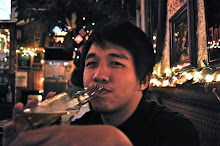Thursday, September 24, 2009
Cut And Paste.
Tuesday, September 22, 2009
Bouncing ball #3
Tuesday, September 15, 2009
Bouncing ball #2.
Monday, September 14, 2009
The creative act
Thursday, September 10, 2009
Bouncing ball.
Saturday, September 5, 2009
animation and "moving object".
After reading the text "Principles of traditional animation", it reminds me a lecture about animation I heard from Mohammed Allababidi six years ago when motion capture was presented in lots of games and filmmaking. It is a way to capture realistic motion, however, this is only a result of how people are trying to keep up their esthetic work with the rapidly involving technology.

It is not animation. Mr. Allababidi gave an example that when he asked an intern student in his studio to animate a dragon, the student simply couldn’t do it, because all he knew was how to use motion capture. Than where can he find a real dragon to capture?
In the digital age, creating animation has become easier than ever before, for instance, 3D animation soft wares such as Maya generates all the in-between frames, and of course the motion capture. Certainly, these advantages are not bad, but some how they mislead people or students to understand what really is animation about. Regardless of what dose it take to make good and fluent animation, most people spent time on realistic texture, lightning and visual effects, because it’s too easy to make things to “move” in a computer. These traditional animation principles such as starch and squash, secondary animation, anticipation and overlapping are what really distinguish real animation from “moving object”.


